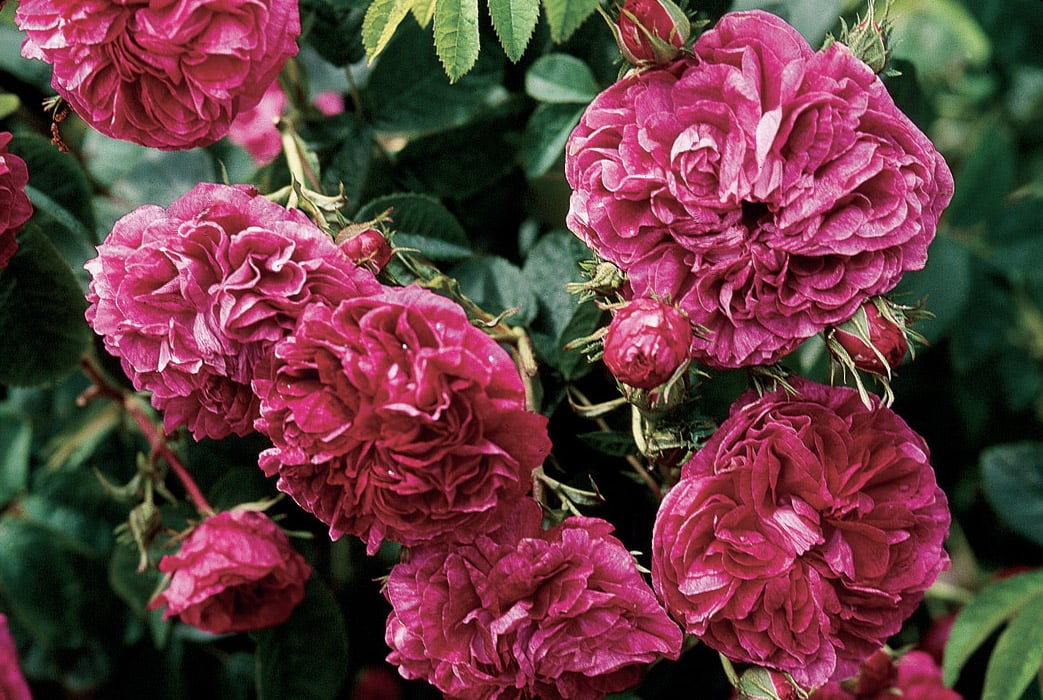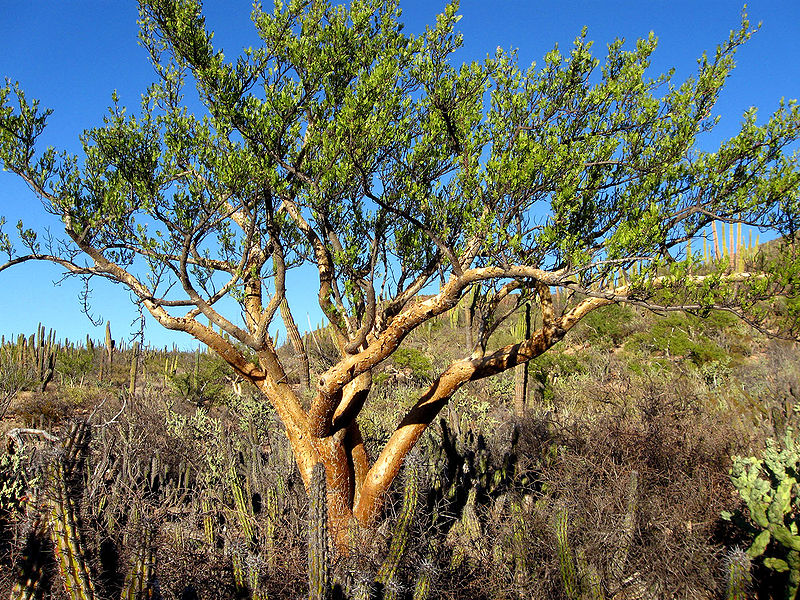

Contributor
- Topics: Archive

Two sentences changed the rose world in January 1974. A short ad in the American Rose Society magazine started a movement that is still gaining momentum:
Those who love old roses are asked to write to M Wilkins, 925 Galvin Drive, El Cerrito, CA 94530. Objective: share information, unobtainable varieties, and enthusiasm.
Miriam Wilkins wrote those lines, having grown tired reading about nothing but the new roses, especially those without any fragrance or individual grace. Miriam is still a resident at that address, and still promoting the cause of old roses. The city where she has spent most of her life honored her recently for her dedication. Her photo and her work are now recorded in the city’s Wall of Fame.

When she submitted her ad, most rose growers, nurseries, and public gardens were interested only in the new roses, mostly the popular hybrid teas. What she wanted was “to share with others the history, beauty, landscaping potential, and low-care attributes of the roses that have survived for so many years—even centuries—despite being ignored by the major nurseries and rosarians.” She also wanted the wonderful perfume of heirloom roses.

At the end of World War II, only one nursery in the world was selling the heirloom plants. Those “unobtainable varieties” are now available at many nurseries throughout the world. For years, the gardening public had been sold on the idea that a rose should re-bloom; many of the heritage ones bloom only once a year. That is still the hardest prejudice to overcome, but Wilkins can take credit for the success of her efforts to promote the old roses. Miriam was born ninety years ago in El Cerrito, a city north of Berkeley, California. She taught elementary school there, and raised four children who have been a great support in her work. Every year, on the Sunday after Mother’s Day, she has organized a Celebration of Old Roses in the community center, with hundreds, even thousands, of rose lovers congregating to look at, smell, and buy the hundreds of plants on display.
She founded the Heritage Roses Group, so that others could join her in promoting them to the public; her quarterly newsletter was published for twenty-five years; it is now edited by Joanie Helgeson.
Her ideas caught on, not only among gardeners but with a few nurseries, at first, and then many joined the cause, both in the United States and overseas. Her newsletter was subscribed to by many overseas, where the movement now has organizations and publications in France, England, New Zealand, and Australia. International heritage rose conferences are held every other year, the last one in Paris.
Marked by her warmth, her knowledge, and her determination to spread the word, Miriam is a firm believer that,

A landscape full of modern roses can be monotonous for their characteristics differ little. However, hybridizers now are varying form and habit; perhaps we have convinced gardeners that a muddled shape can equal the modern ones if that variety is healthy and fragrant.
That “muddled” term refers to the large, full, graceful form of such roses as the albas, Bourbons, Damasks, mosses, and others among the heritage group. She and her colleagues also treasure the species or wild roses, though they are not always adaptable to smaller gardens. In her own large garden, she grows hundreds of shrubs and climbers, drawing rosarians from faraway places to enjoy the fragrance and the beauty of roses that overflow the paths and spill into neighbors’ gardens. A BBC film, innumerable books, and magazine articles have told the story. Peter Beales, the eminent rose nurseryman in England, has remarked that Miriam has made a profound impact on restoring many “forgotten” roses to the nursery lists both here and abroad.

The official flower of the United States is the rose. When Congress passed that bill, it did not state what kind of rose it would be. The Postal Service has designed a rather generic, lifeless picture to represent the world of roses. A series of stamps showing a wider and more beautiful range of roses would be wonderful; and it would be a fitting tribute, as well, to the work of Miriam Wilkins and others who have done so much to renew interest in heritage roses.
Heritage Roses Group
To learn more about the Heritage Roses Group, contact Kristina Osborn, South-west Regional Coordinator, 818 Adams Street, Albany, CA 94706 (kmosborn@earthlink.net), or Sue Hopkins, Northwest Regional Coordinator, 15005 – 132nd Avenue SE, Renton, WA 98058 (425/ 227-9955, suehopkins49@msn.com), or visit www.heritagerosegroup.org.
Share:
Social Media
Garden Futurist Podcast
Most Popular
Videos
Topics
Related Posts

Ground Up Science for Greener Cities with Garden Futurist Dr. Alessandro Ossola
Spring 2023 Listen to the Podcast here. Alessandro Ossola is a scientist who gets very excited about the challenge of climate change allowing for an

Readying Urban Forests for Climate Realities with Garden Futurist Dr. Greg McPherson
Winter 2023 Listen to the Podcast here. “Going from the mow and blow to a more horticulturally knowledgeable approach to maintaining the landscape. And that

Welcome, Greywater, to the Garden
Summer 2022 Oh, summer: delightful warm air, tomatoes swelling on the vine, fragrant blooms on an evening stroll. When it’s warm and rainless, how is

Big Tree-Data and Big-Tree Data with Garden Futurist Matt Ritter
Summer 2022 Listen to the full Garden Futurist: Episode XV podcast here. We are in an environmental crisis right now in many parts of California









Responses